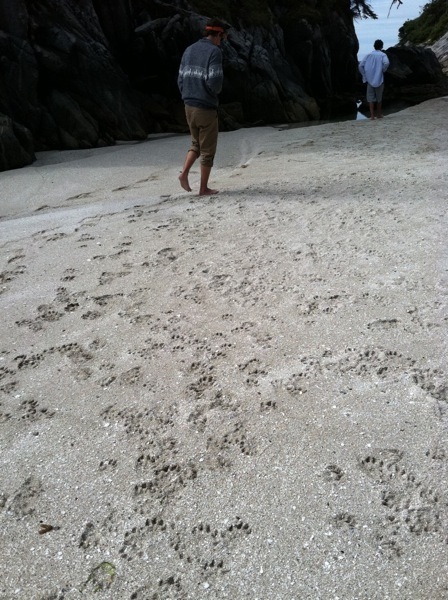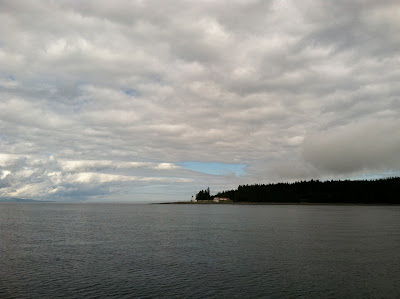Pushing off the dock at Cordova Lodge, we shot through Greenpointe and Whirlpool rapids, riding the remnants of a flood tide, which added an extra 4 -5 knots to Heron’s boat speed. We clocked 11.5 over the bottom (practically flying by Heron standards), and turned into Johnstone Strait.
Johnstone can be rough, but mercifully, conditions were strangely calm: the water flat, the sky blue. We spotted our first Bonaparte gulls, a flock of small, elegant white birds skittering over the water's surface. Along with the chilly fresh air, the birds signaled that we were headed north again…
Jeff and James were playing backgammon in the cockpit when we suddenly spotted orcas off the port beam. “Grab the camera!” “Get the binoculars!” we all shouted at one another, waiting to see where they’d surface next. We didn’t have to wait long; in a few moments two pairs surfaced and followed right beside us, not even 25 yards off the boat. It was two mothers, each trailed closely by a calf, and the visceral thrill of seeing those big black and tiny black dorsal fins slicing through the water right alongside us is almost indescribable.
We knew that about 30 different orca pods move between Washington state and the northern coast of British Columbia – and that nearly half of them can be found in Johnstone Strait in summer, feeding on migrating salmon. But we never counted on seeing them; last summer we crossed Johnstone twice without spotting a single whale.
This year, though, felt like we’d hit the jackpot: the four orcas joined another group closer to shore – including a huge alpha male – and soon they all formed a wide flank, following us off the stern. We were surrounded by orcas for over an hour. By the time we pulled into the docks at Port McNeill we were still on a high, feeling like we’d sailed into a National Geographic special. After dinner we re-played the videos the boys shot, reliving a remarkable day.





















































